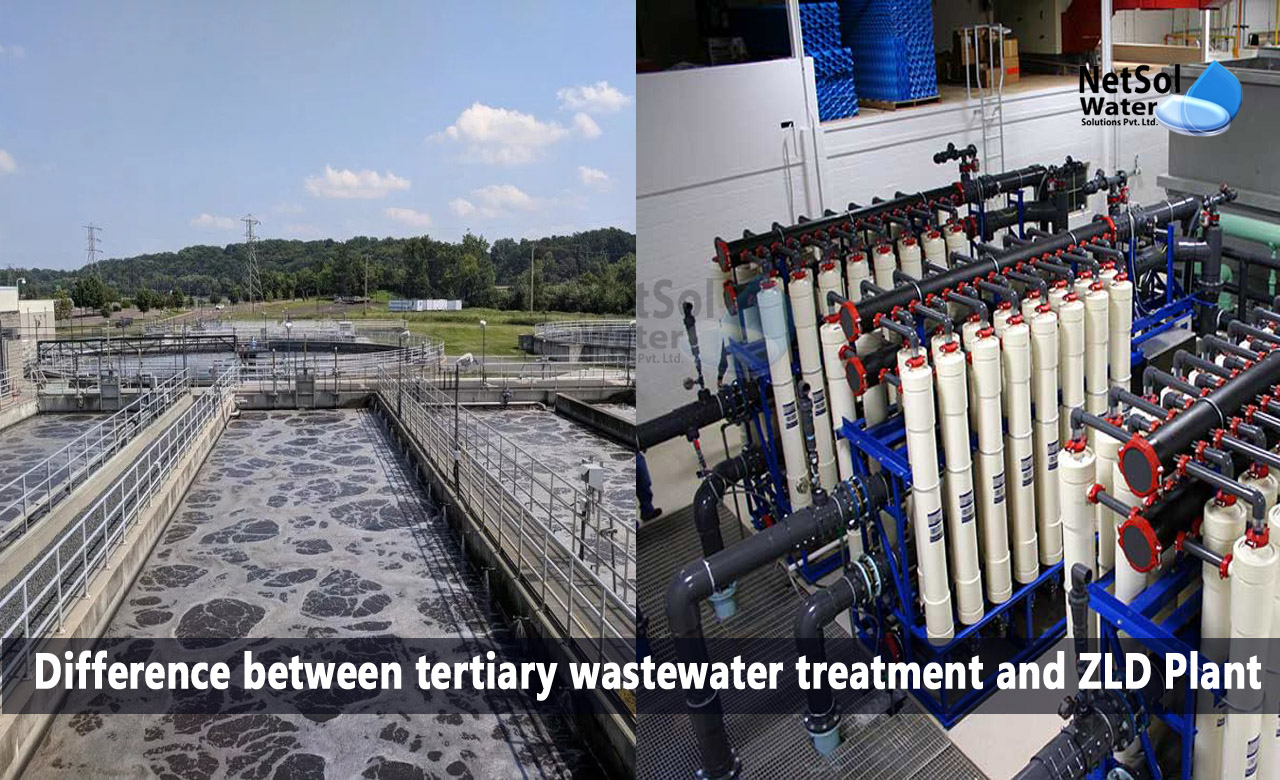Difference between tertiary wastewater treatment and ZLD Plant
The process of treating wastewater involves removing microorganisms, toxins, and other pollutants. Each day, wastewater from our homes, companies, factories, and even schools drains into the city's sewer system.
Additionally, runoff from rain, snowmelt, and street cleaning enters catch basins, before going to the sewers. Wastewater treatment basically consists of a quick process to turn wastewater into bilge water, which can subsequently be released back into the environment.
Now with so many wastewater treatment methods, we will understand the difference between tertiary wastewater treatment and Zero Liquid Discharge Plants!
What is tertiary wastewater treatment?
From wastewater, secondary treatment eliminates 85 to 90% of BOD, TSS, and the tiny amounts of nitrogen, phosphorus, and heavy metals.
Wastewater treatment's third stage, or tertiary treatment, is also referred to as an advanced treatment. With tertiary treatment, the nitrogen and phosphate burden in the water is reduced. Filtration, ion exchange, activated carbon adsorption, reverse osmosis, electro-dialysis, nitrification, and denitrification, are some of the procedures included in it.
The properties of the effluent after secondary treatment and the type of water required following treatment, determines the tertiary treatment alternatives.
· Filtration Process
The particle matter is removed during the filtration process, by running water through a porous medium. The various media used in the filtration process are typically composed of sand, gravel, and charcoal. Sand filtration comes in two forms: slow sand filtration and quick sand filtration.
· Membrane Process
Sewage, organic and inorganic debris, as well as water-soluble oil wastes, are just a few of the wastes that are treated using membrane technology.
On the basis of the driving force and separation method, the membrane processes are categorized as Reverse Osmosis (RO), Forward Osmosis, Microfiltration (MF), Ultrafiltration (UF), and Nanofiltration (NF).
· Advanced Oxidation System
In order to eliminate bacteria and breakdown organic pollutants, ozone is added to the process. When oxygen is exposed to a high voltage electric field, ozone gas (O3) is created.
What is ZLD in wastewater treatment?
A strategic wastewater management method called zero liquid discharge (ZLD), makes sure that no industrial effluent will be released into the environment. It is accomplished by first recycling wastewater, followed by recovery and reuse for industrial purposes.
How can we achieve zero liquid discharge?
There are several approaches to achieving zero liquid discharge. The ideal system design is site-specific, hence, there is no "one size fits all" approach.
An ideal design is determined by the wastewater composition, the several streams to be treated, site-specific operating costs, footprint availability, and other variables.
The system goals for a zero-liquid discharge system are to remove the discharge of liquid wastewater, produce solids for reuse or disposal in landfills, and recycle high-quality water that can be utilized for good. The design goals are to reduce the required manpower for operation, without adversely affecting the capital investment or system running costs.
Additionally, the system needs to be secure and dependable, with operational flexibility to match the needs of the institution.
What rules apply to ZLD in India?
For the treatment of wastewater, India's environmental standards require "Zero Liquid Discharge" (ZLD). This requires that industrial effluent not be discharged outside of the manufacturing plant's site boundaries.
Also, ZLD makes it possible for wastewater streams to be efficiently recycled, which aids an enterprise in preventing wastewater discharge, into surrounding waterways or onto land.
Additionally, the public's growing concern over the environmental effects of such discharges, as well as the scarcity of water in many parts of the world are two factors, which are pushing for zero liquid discharge.
What do we offer?
For efficient water and wastewater treatment, including recycling and recovery, Netsol Water possesses the proprietary technology required. For industrial, commercial, and municipal applications, prominent industries from around the world are using our water saving solutions.
Given the urgent requirement to conserve and recover water, water optimization is a crucial component of all contemporary organizations. We are providing specialized wastewater treatment solutions, like tertiary treatment, Zero Liquid Discharge treatment which requires a combination of technologies, expertise, and experience.
For further information or to make a product purchase, contact us at +91-9650608473 or enquiry@netsolwater.com



